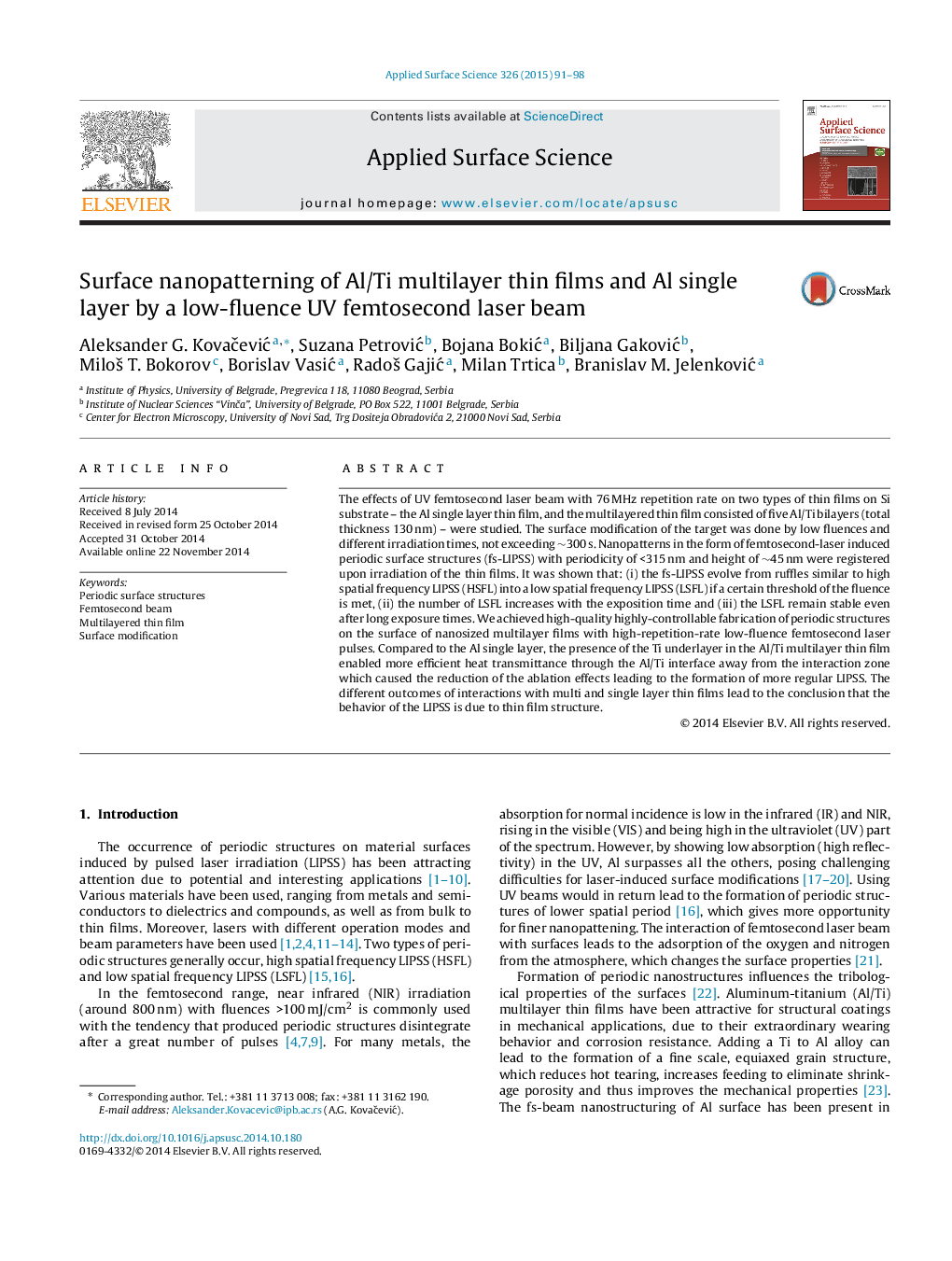| Article ID | Journal | Published Year | Pages | File Type |
|---|---|---|---|---|
| 5350902 | Applied Surface Science | 2015 | 8 Pages |
Abstract
The effects of UV femtosecond laser beam with 76Â MHz repetition rate on two types of thin films on Si substrate - the Al single layer thin film, and the multilayered thin film consisted of five Al/Ti bilayers (total thickness 130Â nm) - were studied. The surface modification of the target was done by low fluences and different irradiation times, not exceeding â¼300Â s. Nanopatterns in the form of femtosecond-laser induced periodic surface structures (fs-LIPSS) with periodicity of <315Â nm and height of â¼45Â nm were registered upon irradiation of the thin films. It was shown that: (i) the fs-LIPSS evolve from ruffles similar to high spatial frequency LIPSS (HSFL) into a low spatial frequency LIPSS (LSFL) if a certain threshold of the fluence is met, (ii) the number of LSFL increases with the exposition time and (iii) the LSFL remain stable even after long exposure times. We achieved high-quality highly-controllable fabrication of periodic structures on the surface of nanosized multilayer films with high-repetition-rate low-fluence femtosecond laser pulses. Compared to the Al single layer, the presence of the Ti underlayer in the Al/Ti multilayer thin film enabled more efficient heat transmittance through the Al/Ti interface away from the interaction zone which caused the reduction of the ablation effects leading to the formation of more regular LIPSS. The different outcomes of interactions with multi and single layer thin films lead to the conclusion that the behavior of the LIPSS is due to thin film structure.
Related Topics
Physical Sciences and Engineering
Chemistry
Physical and Theoretical Chemistry
Authors
Aleksander G. KovaÄeviÄ, Suzana PetroviÄ, Bojana BokiÄ, Biljana GakoviÄ, MiloÅ¡ T. Bokorov, Borislav VasiÄ, RadoÅ¡ GajiÄ, Milan Trtica, Branislav M. JelenkoviÄ,
